#Vincent Paronnaud
Photo

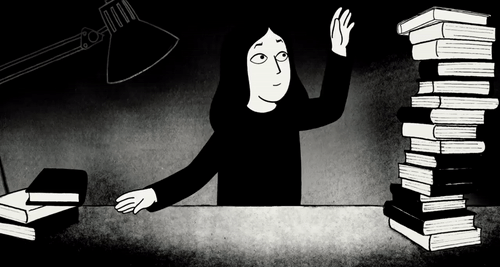

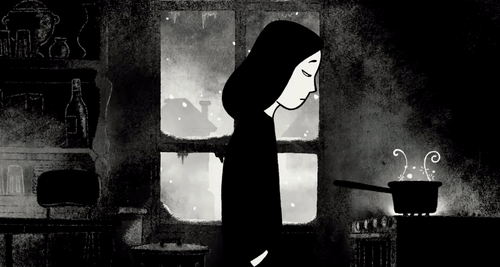


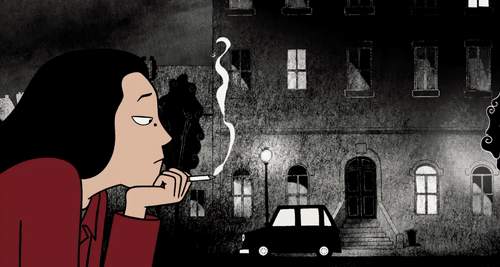
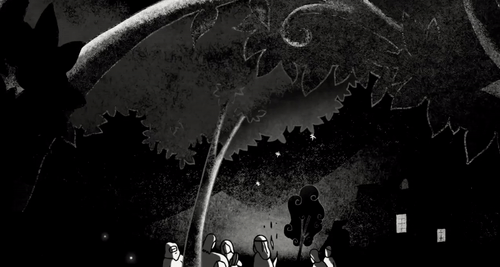
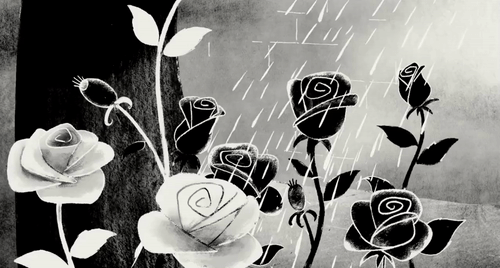

Persepolis (2007)
#persepolis#marjane satrapi#vincent paronnaud#film#animation#cinematography#black and white#biography#nature#reading#smoking#roses#dancing#cooking#my edit
1K notes
·
View notes
Text
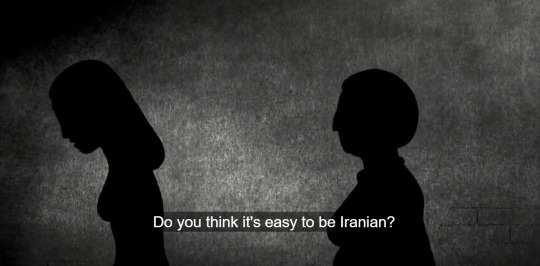


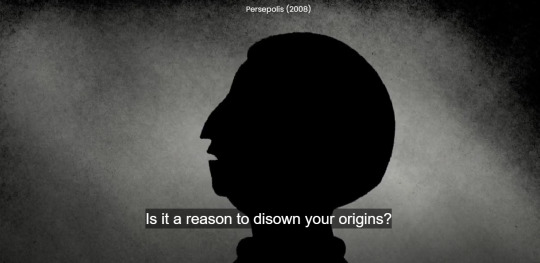
50 notes
·
View notes
Text
Best animated movie!
Choose your favorite movie: Marjane Satrapi's story of coming of age under a repressive regime, or the best found family story ever.
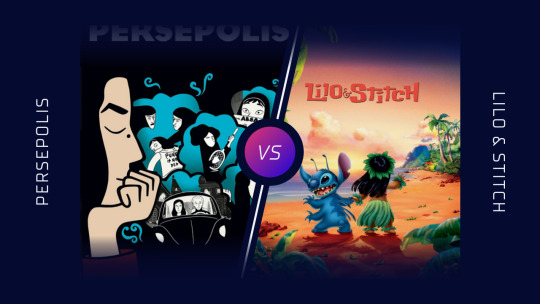
Vote on the other polls of Round 1
#Persepolis#Lilo & Stitch#lilo and stitch#Vincent Paronnaud#Marjane Satrapi#Chris Sanders#Dean DeBlois#Disney#polls#my polls#best animated movie#animation#animated movies#y
7 notes
·
View notes
Text
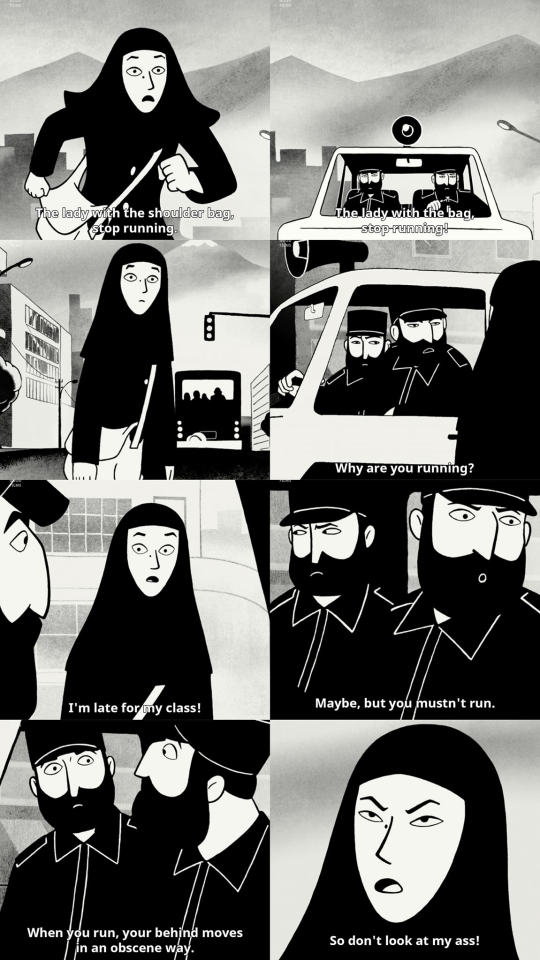
2007: Persepolis
13 notes
·
View notes
Photo

11 notes
·
View notes
Text
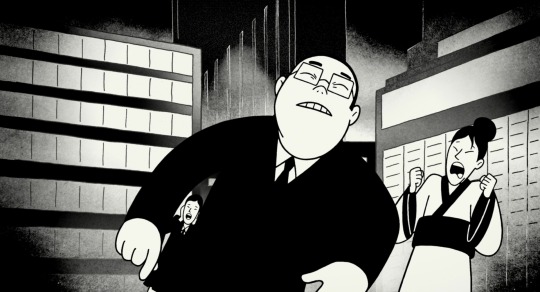
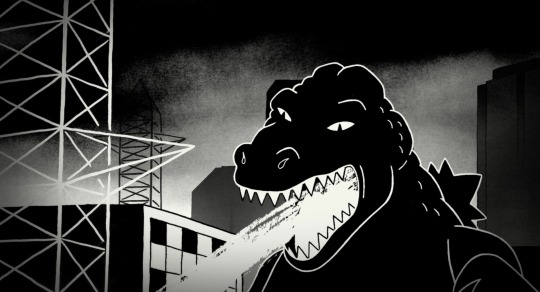
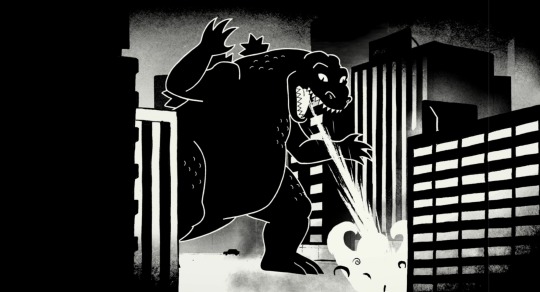
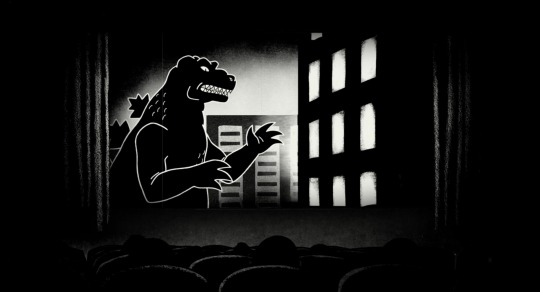
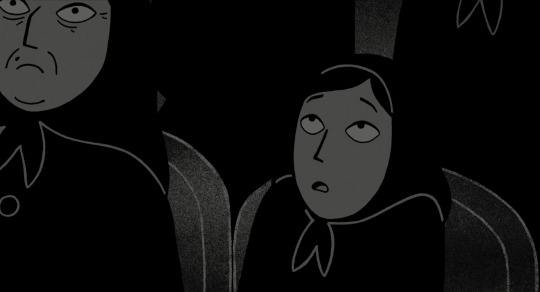


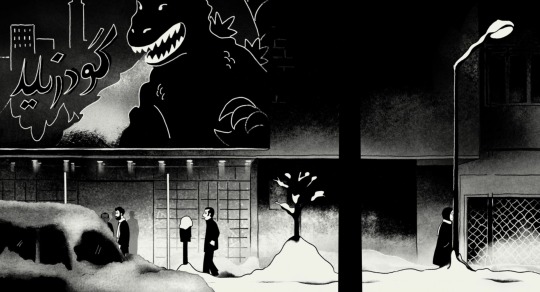
From Filmsinfilms.com
Ishirô Honda’s Godzilla (1954) in Vincent Paronnaud/Marjane Satrapi’s Persepolis (2007).
#film#pel·lícula#movie#película#persepolis#marjane satrapi#vincent paronnaud#comic#comic books#films based on comics#filmsinfilms#movie theater#movie theater in films#People in movie theaters#movies in movies#movies in films#people in movie theaters
0 notes
Text
Hunted is an interesting beast. At first blush it was powerful, but on closer inspection...the power dynamic at work leaves something to be desired.
#hunted#nightstream#film festivals#horror#horror films#movie review#film review#fairy tales#fairy tale adaptations#revenge films#little red riding hood#vincent paronnaud#lea pernollet#joachim phillippe#lucie debay
0 notes
Photo
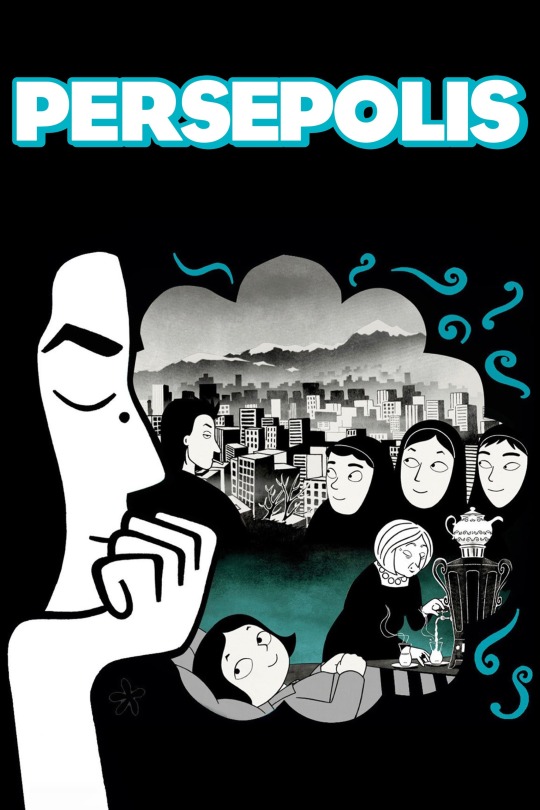
Découverte de Persepolis (2007)
#persepolis#marjane satrapi#vincent paronnaud#chiara mastroianni#catherine deneuve#danielle darrieux#cinéma#animation
0 notes
Text




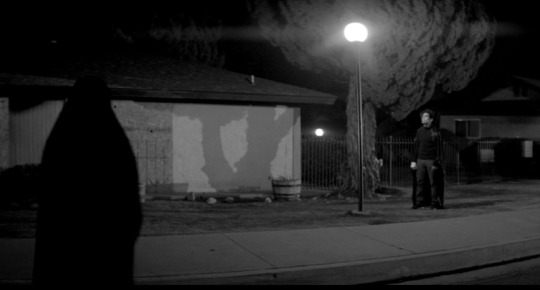

a collection of modern black & white films
✧ ‘Persepolis’ (2007) dir. Vincent Paronnaud, Marjane Satrapi
✧ ‘The Lighthouse’ (2019) dir. Robert Eggers
✧ ‘Cold War’ (2018) dir. Paweł Pawlikowski
✧ ‘The Tragedy of Macbeth’ (2021) dir. Joel Coen
✧ ‘A Girl Walks Home Alone at Night’ (2014) dir. Ana Lily Amirpour
✧ ‘Frances Ha’ (2012) dir. Noah Baumbach
#films#black and white#black & white#movies#film#film frames#cinema#film stills#cinematography#persepolis#cinephile#screencaps#film lovers#film is not dead#film tag#cinephiles#film lover#film community
173 notes
·
View notes
Video
Persepolis
Directors: Marjane Satrapi & Vincent Paronnaud
France/Iran, 2007
#Persepolis#Marjane Satrapi#Animation#Iran#Iranian Revolution#Islam#Women#War#Black and White#Fundamentalism#Iran–Iraq War#Muslim
383 notes
·
View notes
Photo
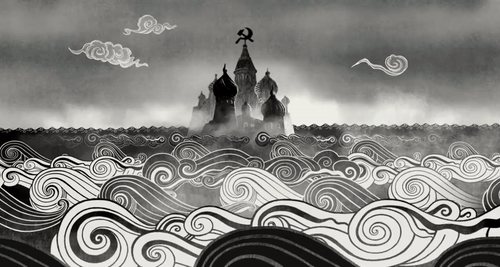
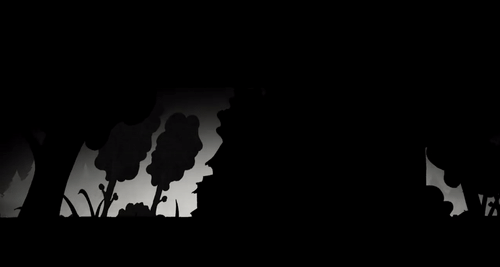


Persepolis (2007)
#persepolis#marjane satrapi#vincent paronnaud#film#animation#cinematography#black and white#cityscape#cars#movie details#my edit
142 notes
·
View notes
Text

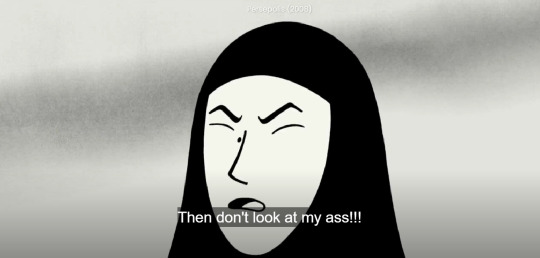
30 notes
·
View notes
Text
Viewing Response 1: Dispersed Peoples

The autocomic epic Persepolis frames Iran’s changing cultural landscape through the life of author Marjane Satrapi. Reimagined as an animated film, the notion of perspective is emboldened by its cinematic landscape. In one scene, Satrapi’s uncle Anoosh recounts a harrowing tale of escape in the midst of political upheaval. At this point in the story, Satrapi is still a child. As such, the sequence has all the whimsy of a children’s folktale. Scenery glides in and out like pop-up book displays while vindictive political militia has the exaggerated mannerisms of storybook villains. As is the case throughout the film, the animation style seems to be sprung from the vantage point of our protagonist. Through a blend of comic book style illustration and filmic animation Satrapi (along with co-director Vincent Paronnaud) is able to achieve what author Stacey Weber-Fève refers to as “a new understanding of affective memory and storytelling.” By externalizing Satrapi’s imaginative world, we come to understand how war is seen through the eyes of a child. Persepolis is centered on the experience of individuals, imbuing history with humanity and heart.
@theuncannyprofessoro

5 notes
·
View notes
Note
Hi user nanaphat! Hope you’re doing well!
Here’s a list of animated films that you might like :) (Nothing can compete with The Grave of the Fireflies though)
- The Summit of the Gods dir. Patrick Imbert
- Tales of Earthsea dir. Goro Miyazaki
- The Swallows of Kabul dir. by Zabou Breitman and Eléa Gobé Mévellec
- Persepolis dir. Vincent Paronnaud and Marjane Satrapi
- Flee dir. Jonas Poher Rasmussen
- Colorful dir. Keiichi Hara
My favourite from this list is The Summit of the Gods. I adore Jiro Taniguchi’s work and the film beautifully adapted his art style. Nothing can top the sheer beauty of his words and drawings and yet I feel like this film succeeded in encapsulating the essence of his work.
thank you so much for this high-quality list omg! i will slowly work through all of them and who knows!!! i might liveblog if i remember to!
the funny thing is that i actually read the original manga version of the summit of the gods and i really liked it. (our tastes match yay!!) so i think i'll put that at the bottom of my watch list for now, since i still remember how that plot went. but i have no doubt the film was the perfect adaptation for it hehe
#answered#Anonymous#speaking of taniguchi’s works! i also read two other manga by him and they were uhh#aruku hito and chichi no koyomi#chichi koyomi i loved! and that was the perfect type of seinen i always look for. but aruku hito not so much#but in general i have a lot of respect for his style and unique way of storytelling!! ^.^ definitely keen on reading more of his other work#didn't expect someone to mention him on the drama side of tumblr hehe#to keep
3 notes
·
View notes
Text
Persepolis Viewing Response 1
Marjane Satrapi’s film, based on her novel, “Persepolis”, is a semi-autobiographical retelling of her life during and after the Iranian revolution. It follows her as she grows up in Iran, eventually moves to Austria for school, comes back for her family, and ends with her moving to Paris indefinitely. The film explores and links the ideas of culture, belonging, and migration through Marjane’s story. “Persepolis” is unconventional as it is entirely animated, the majority of which is in black and white, and as a result it exists in the minority of other films telling similar stories. In Stacey Weber Feve’s article, “Framing the ‘Minor’ in Marjane Satrapi and Vincent Paronnaud’s Persepolis”, she explores the concept of the minor in Persepolis, emphasizing how certain framing and imagery choices replicate migratory-like movements that add to the East-West dichotomy in the film. Marjane’s feelings of never truly being home in both Iran and Europe are emphasized by invisible and open frame shots, the angles at which characters are filmed, and the “motif of cultural transference” with the jasmine flower.
2 notes
·
View notes
Text
"Abba is for Wimps": Persepolis and the Major/Minor Discourse
"Persepolis" manages to traverse the line between endearing and intelligent humor and political discourse in a way that would not be possible without the film's intrepid protagonist, Marjane. Marjane loves music and purchases contraband tapes and vinyls of the Bee Gees and Iron Maiden, using Western music as escapism from the fundamentalist regime crumbling around her. In a particular scene, she excitedly shows a friend her Bee Gees vinyl, then sees a classmate's ABBA vinyl and tells her "Abba is for wimps." The exchange is characterized by Marjane's incisive wit and exemplifies the film's genuine moments of humor and rich character-building. Moments after the exchange, an alarm goes off, panic sets in, and the students evacuate their classroom as bombs fall around them. Stacey Weber-Fève’s “Framing the ‘Minor" asserts that Marjane Satrapi and Vincent Paronnaud's work possesses a "sometimes startling, sometimes reassuring juxtaposition of the ‘'major' and the 'minor'" (324). This scene is an expression of the minor, of the kind of self-righteousness teenagers fumbling for self-expression project onto one another, quickly interrupted by the major--the political chaos persists, but so does Marji's spirit. The two, the major and minor, refuse to cease in the film despite the other's sharp contrast, and they work together to scaffold Marji's identity formation and fuel her inner conflict.
@theuncannyprofessoro
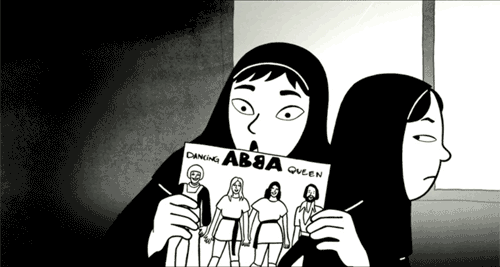
2 notes
·
View notes